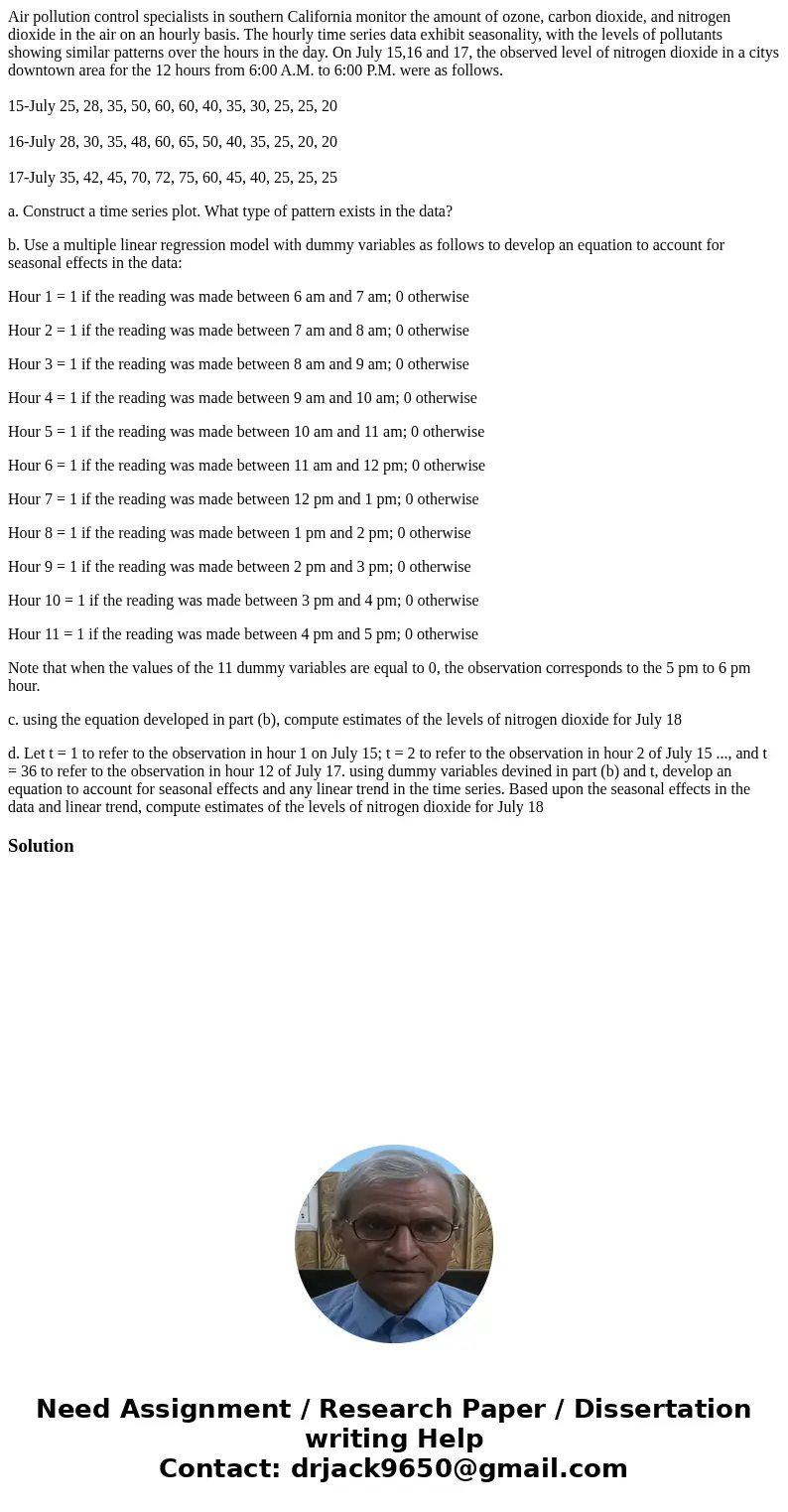Air pollution control specialists in southern California mon
Air pollution control specialists in southern California monitor the amount of ozone, carbon dioxide, and nitrogen dioxide in the air on an hourly basis. The hourly time series data exhibit seasonality, with the levels of pollutants showing similar patterns over the hours in the day. On July 15,16 and 17, the observed level of nitrogen dioxide in a citys downtown area for the 12 hours from 6:00 A.M. to 6:00 P.M. were as follows.
15-July 25, 28, 35, 50, 60, 60, 40, 35, 30, 25, 25, 20
16-July 28, 30, 35, 48, 60, 65, 50, 40, 35, 25, 20, 20
17-July 35, 42, 45, 70, 72, 75, 60, 45, 40, 25, 25, 25
a. Construct a time series plot. What type of pattern exists in the data?
b. Use a multiple linear regression model with dummy variables as follows to develop an equation to account for seasonal effects in the data:
Hour 1 = 1 if the reading was made between 6 am and 7 am; 0 otherwise
Hour 2 = 1 if the reading was made between 7 am and 8 am; 0 otherwise
Hour 3 = 1 if the reading was made between 8 am and 9 am; 0 otherwise
Hour 4 = 1 if the reading was made between 9 am and 10 am; 0 otherwise
Hour 5 = 1 if the reading was made between 10 am and 11 am; 0 otherwise
Hour 6 = 1 if the reading was made between 11 am and 12 pm; 0 otherwise
Hour 7 = 1 if the reading was made between 12 pm and 1 pm; 0 otherwise
Hour 8 = 1 if the reading was made between 1 pm and 2 pm; 0 otherwise
Hour 9 = 1 if the reading was made between 2 pm and 3 pm; 0 otherwise
Hour 10 = 1 if the reading was made between 3 pm and 4 pm; 0 otherwise
Hour 11 = 1 if the reading was made between 4 pm and 5 pm; 0 otherwise
Note that when the values of the 11 dummy variables are equal to 0, the observation corresponds to the 5 pm to 6 pm hour.
c. using the equation developed in part (b), compute estimates of the levels of nitrogen dioxide for July 18
d. Let t = 1 to refer to the observation in hour 1 on July 15; t = 2 to refer to the observation in hour 2 of July 15 ..., and t = 36 to refer to the observation in hour 12 of July 17. using dummy variables devined in part (b) and t, develop an equation to account for seasonal effects and any linear trend in the time series. Based upon the seasonal effects in the data and linear trend, compute estimates of the levels of nitrogen dioxide for July 18
Solution

 Homework Sourse
Homework Sourse